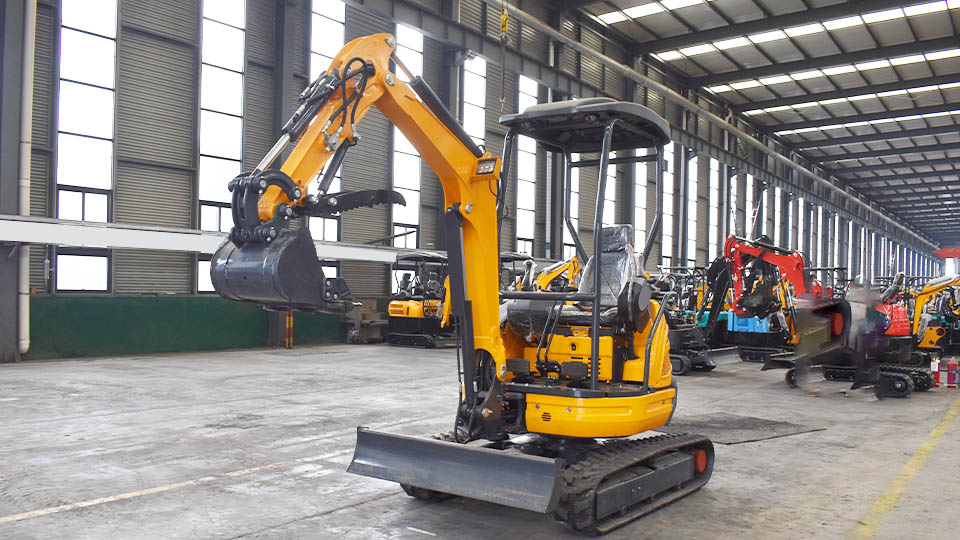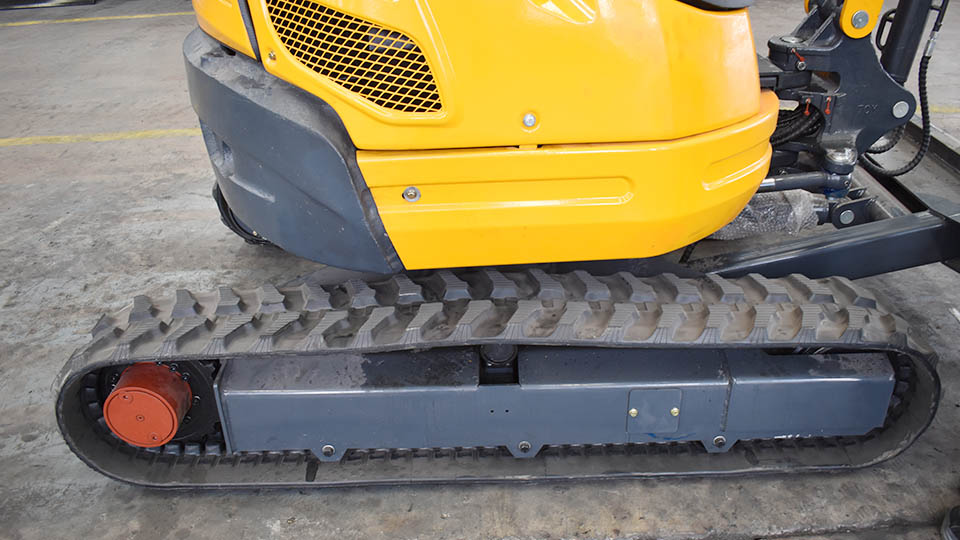The transportation of heavy equipment particularly excavators is a complex process governed by a multitude of regulations aimed at ensuring the safety of the public infrastructure and the transporters themselves. Among the most critical aspects of these regulations are weight limits which dictate the maximum permissible mass of the vehicle and its load. Exceeding these limits can result in significant fines legal repercussions and most importantly pose serious safety hazards. For contractors excavating equipment owners and transportation professionals a thorough understanding of excavator weight limits and the associated regulations is not just a matter of compliance it is a fundamental requirement for responsible and efficient operations. This technical article delves into the key aspects of transport regulations concerning excavator weight limits outlining what you need to know to ensure legal safe and seamless transportation of these essential pieces of machinery.
The primary reason for imposing weight limits on the transportation of heavy equipment is the protection of roadways bridges and other infrastructure. Excessive weight can cause significant damage to road surfaces leading to premature deterioration increased maintenance costs and potential safety hazards for all road users. Bridges are designed with specific load-bearing capacities and exceeding these limits can compromise their structural integrity potentially leading to catastrophic failures. Furthermore overweight vehicles can pose a direct safety risk due to increased braking distances reduced maneuverability and a higher likelihood of accidents.
In the United States the primary regulatory framework governing interstate transportation including weight limits is established by the Federal Highway Administration FHWA under the Department of Transportation DOT. However individual states also have their own specific laws and regulations regarding vehicle weights and dimensions which may be more restrictive than federal guidelines. It is crucial to be aware of both federal and state regulations for all jurisdictions through which the excavator will be transported.
Understanding Key Weight Limit Concepts:
Several key terms and concepts are fundamental to understanding excavator weight limits:
Gross Vehicle Weight Rating GVWR: This is the maximum permissible total weight of a vehicle including its chassis body engine fuel passengers and cargo. For a truck and trailer combination transporting an excavator the GVWR applies to the entire unit.
Axle Weight Limits: Regulations also specify the maximum weight that can be carried by each individual axle or set of axles on a vehicle. These limits are designed to distribute the weight evenly and prevent excessive stress on specific parts of the roadway or bridge structure. Axle weight limits vary depending on the number of axles the spacing between them and the type of tires used.
Bridge Formula Weights: The federal bridge formula is a complex mathematical equation used to determine the maximum permissible gross weight of a vehicle based on the number and spacing of its axles. This formula is designed to prevent excessive stress on bridges. Many states also have their own bridge formulas which may differ slightly from the federal one.
Legal Weight Limits: These are the maximum weights allowed by law for a specific type of vehicle or axle configuration without requiring special permits. These limits are typically based on the GVWR axle weight limits and bridge formula weights.

Permitted Weights: When the weight of an excavator and its transport vehicle exceeds legal weight limits it is often possible to obtain special permits from the relevant transportation authorities. These permits allow for the transportation of overweight loads under specific conditions such as designated routes escort vehicles and specific times of travel. Obtaining permits usually involves an application process fees and adherence to the conditions outlined in the permit.
Factors Determining Excavator Transportation Weight:
The actual weight that needs to be considered for transportation regulations includes not just the base weight of the excavator but also several other factors:
Base Machine Weight: This is the weight of the excavator as specified by the manufacturer without any attachments or additional equipment.
Attachments: The weight of any attachments being transported with the excavator such as buckets breakers or grapples must be added to the base machine weight.
Fuel and Fluids: A full tank of fuel and other operating fluids can add significant weight. It is often advisable to transport excavators with minimal fuel to reduce the overall weight.
Trailer Weight: The weight of the trailer itself must be factored into the gross vehicle weight rating. Different types of trailers such as flatbeds lowboys and goosenecks have varying weights.
Securing Equipment: The weight of chains binders and other securing devices although relatively small should also be considered in the overall weight calculation.
Navigating Weight Limit Regulations:
To ensure compliance with excavator weight limit regulations it is essential to follow these steps:
Determine the Excavator's Actual Weight: Obtain the accurate weight of the excavator including all attachments and any other items being transported. Consult the manufacturer's specifications and consider weighing the machine if necessary.
Identify Applicable Federal and State Regulations: Research the weight limits and regulations for all states and federal jurisdictions through which the excavator will be transported. Pay attention to GVWR axle weight limits and bridge formulas.
Select the Appropriate Trailer and Towing Vehicle: Choose a trailer with a sufficient weight capacity to safely and legally transport the excavator. Ensure that the towing vehicle has the necessary GVWR and towing capacity for the combined weight of the trailer and the excavator.
Properly Distribute the Load: Ensure that the excavator is loaded and secured on the trailer in a way that distributes the weight evenly across the axles and complies with axle weight limits. Improper load distribution can lead to overweight axles even if the gross weight is within limits.
Obtain Necessary Permits: If the weight of the excavator and transport vehicle exceeds legal limits apply for the required overweight permits from all relevant state and federal authorities well in advance of the transport date. Be prepared to provide detailed information about the load route and vehicle configuration.
Adhere to Permit Conditions: If transporting under a permit strictly comply with all the conditions specified in the permit such as designated routes escort vehicle requirements and time of travel restrictions.
Regularly Inspect Equipment: Ensure that the trailer tires brakes and other components are in good working order and capable of handling the weight of the load.
Train Personnel: Ensure that all personnel involved in the transportation process including drivers and loaders are thoroughly trained on weight limit regulations proper loading and securing procedures and permit requirements.

Consequences of Violating Weight Limits:
Violating excavator weight limit regulations can lead to severe consequences including:
Significant Fines: Penalties for overweight violations can be substantial and vary by jurisdiction. Fines can be levied on the driver the vehicle owner and the shipper.
Legal Repercussions: Repeated or egregious violations can lead to more serious legal consequences such as license suspension or even criminal charges.
Vehicle Impoundment: Authorities may impound overweight vehicles until the excess weight is removed and all fines are paid leading to costly delays and disruptions.
Insurance Issues: Operating overweight can void insurance coverage in the event of an accident leaving the responsible parties liable for significant damages.
Safety Hazards: Overweight vehicles are more difficult to control and have longer braking distances increasing the risk of accidents and injuries.
Damage to Infrastructure: Violations contribute to the premature deterioration of roads and bridges imposing costs on taxpayers and potentially creating unsafe conditions for all road users.
Technological Aids for Compliance:
Several technologies can assist in ensuring compliance with excavator weight limit regulations:
Onboard Weighing Systems: These systems provide real-time weight readings for individual axles and the gross vehicle weight allowing drivers to monitor their load and avoid exceeding limits.
GPS Tracking and Route Planning Software: These tools can help plan routes that comply with weight restrictions and permit requirements.
Electronic Logging Devices ELDs: While primarily focused on hours of service ELDs can also integrate with other systems to provide weight information.
Mobile Apps and Online Resources: Various apps and websites provide access to state and federal weight limit regulations permit information and route planning tools.
Conclusion:
The transportation of excavators is subject to stringent weight limit regulations designed to protect infrastructure and ensure public safety. A thorough understanding of federal and state laws GVWR axle weight limits bridge formulas and permitting procedures is essential for all parties involved in the process. By accurately determining the weight of the excavator and transport vehicle selecting appropriate equipment properly distributing the load obtaining necessary permits and adhering to all regulations contractors and transporters can avoid costly fines legal repercussions and most importantly ensure the safe and efficient movement of these vital pieces of equipment. Compliance with excavator weight limits is not just a legal obligation it is a fundamental aspect of responsible and professional operations in the heavy equipment industry.
Post time:Sep-25-2020
